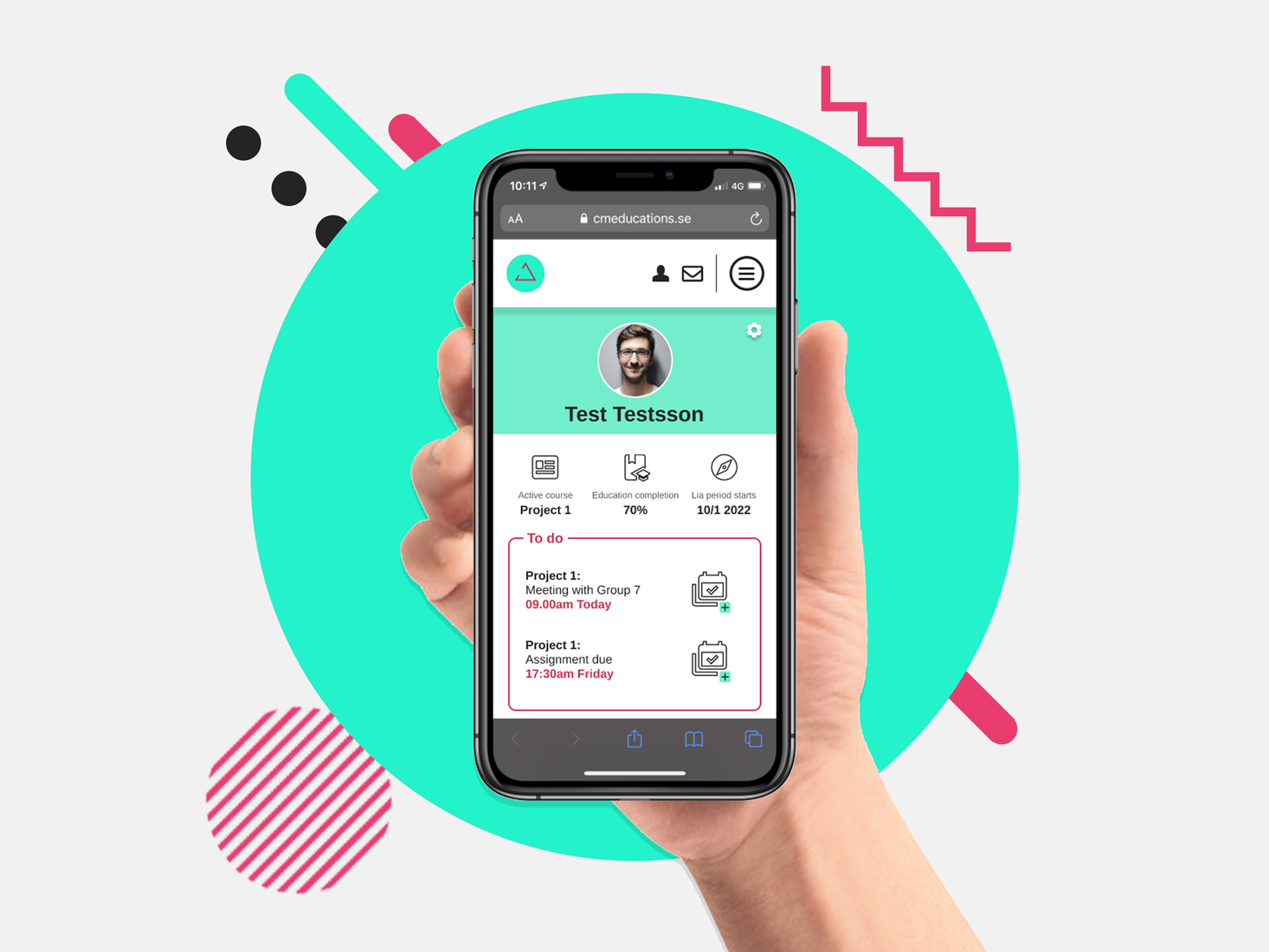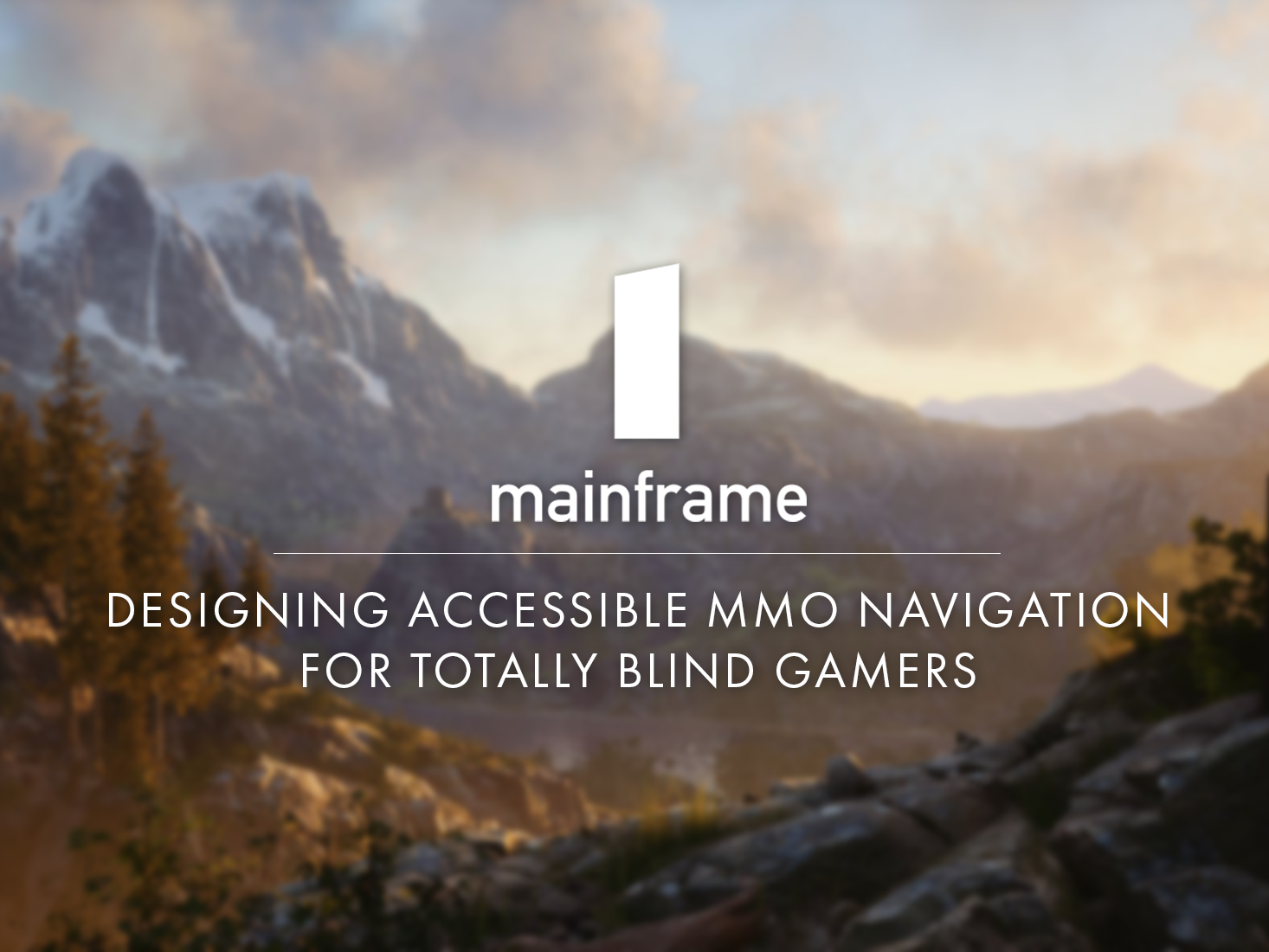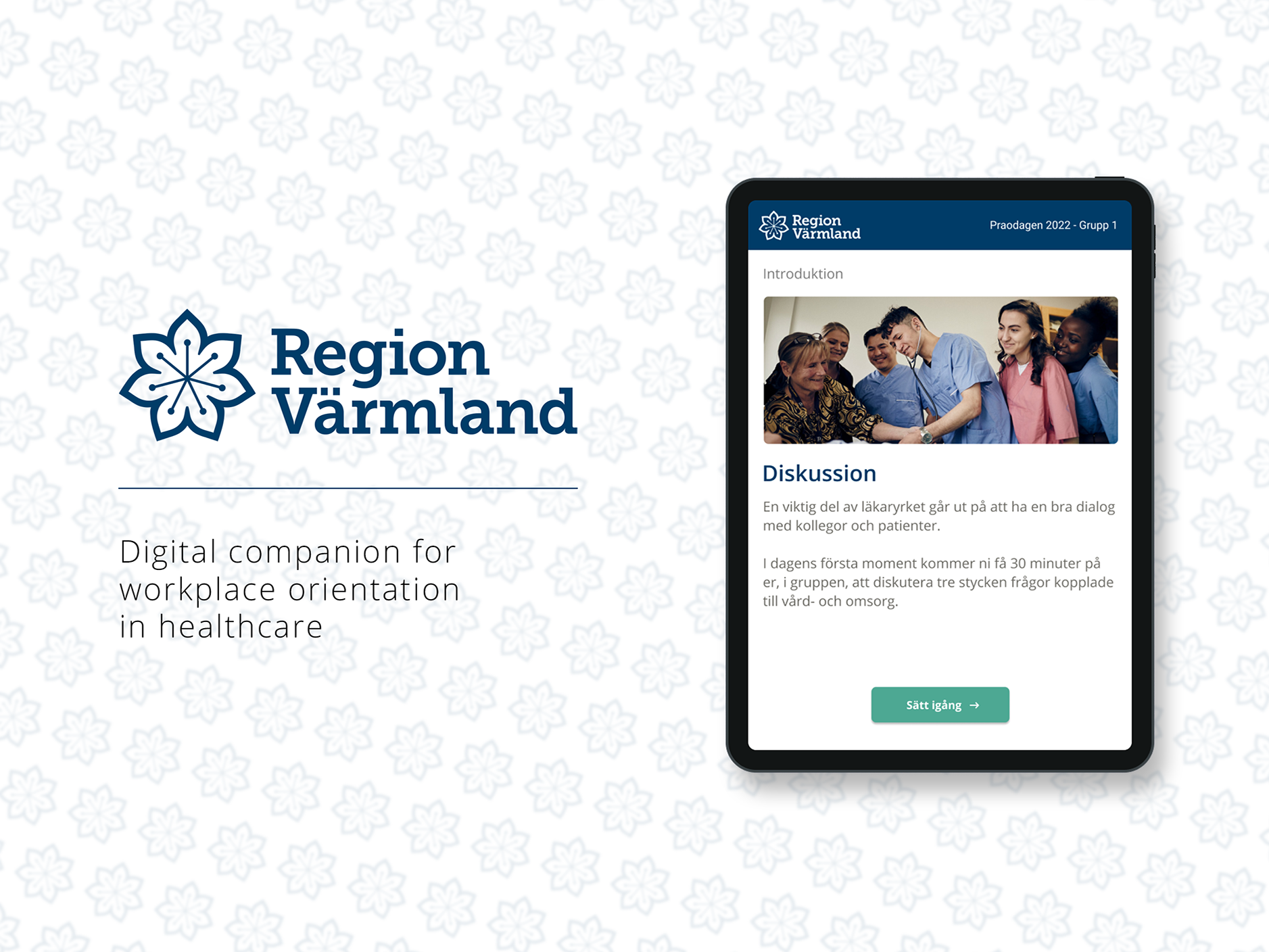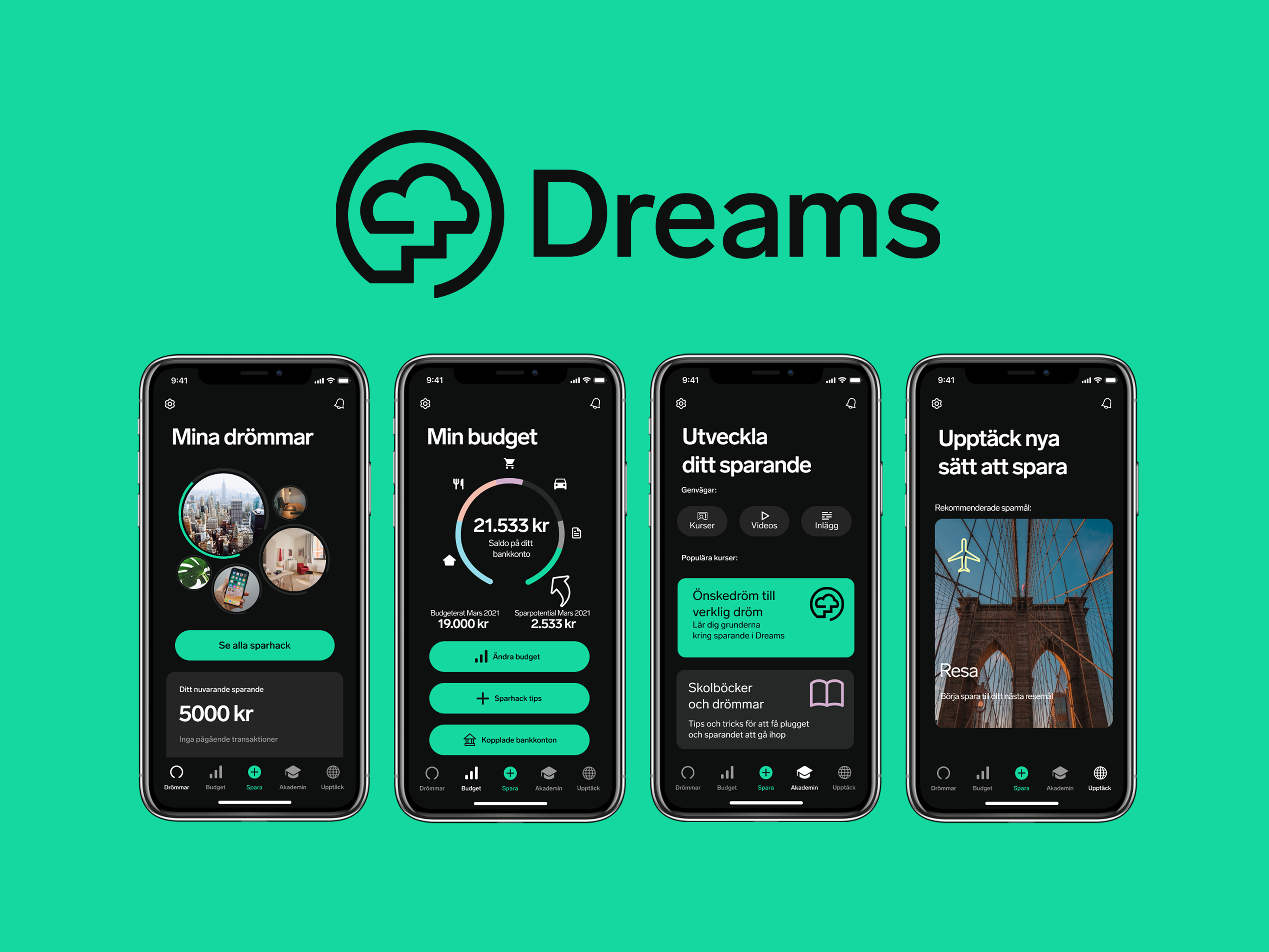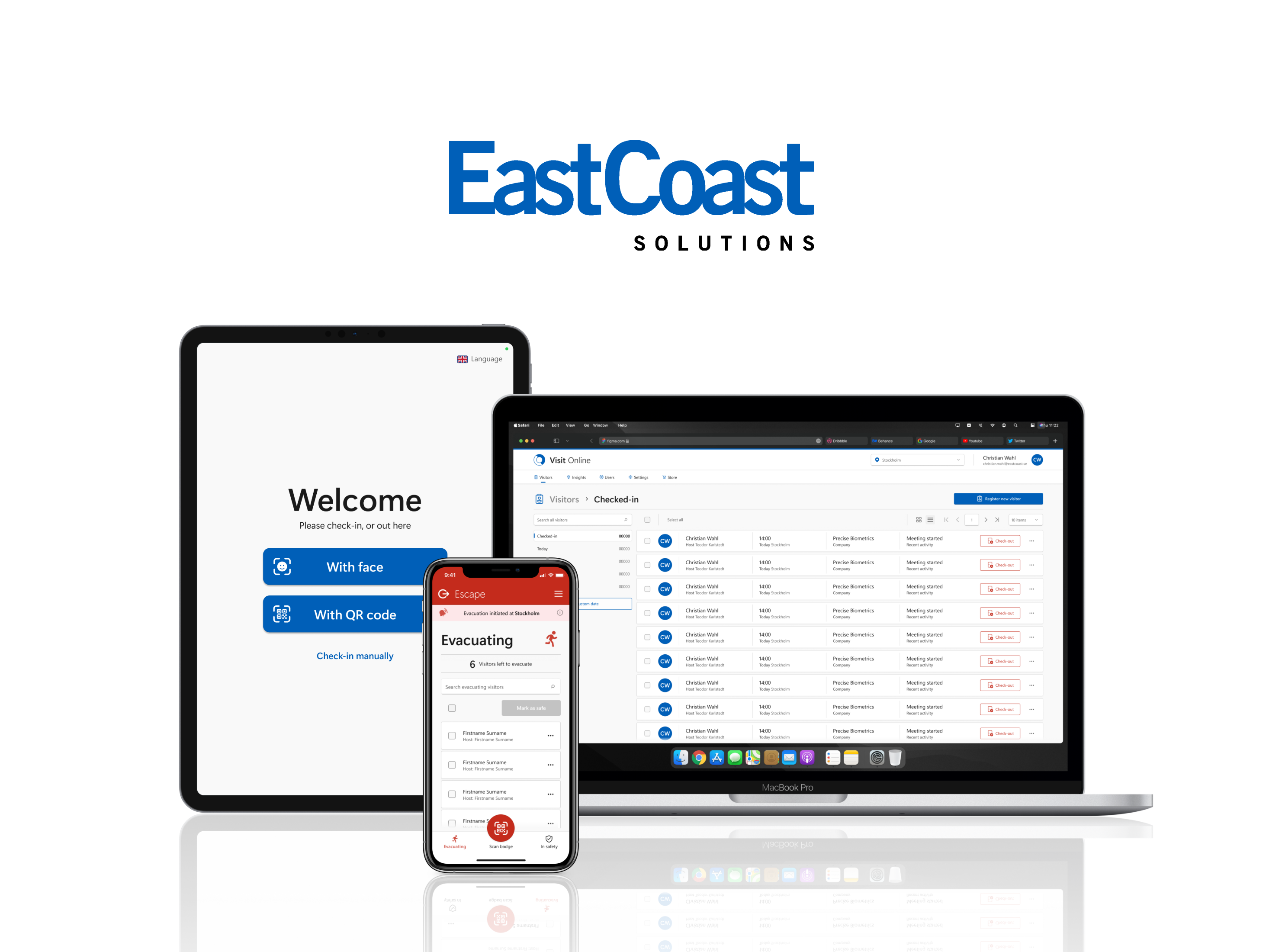Job seeker's new toolbox
In this 3-week long project at Changemaker Educations, we worked with Arbetsförmedlingen, the Swedish government's public employment service (here on referred to as AF).
We aimed to help Arbetsförmedlingen figure out how a system to take full control of your personal data in the job-hunting process could look like.
AF was also interested in what miscellaneous changes could be made to their services to improve their relationship with aspirants.
Being the project manager for a cross-functional team of 6, I kept track of the schedule, timesheets, and client relations.
During the prototyping phase, I acted as lead designer on the My data section of our concept.
" How can job-seeking individuals in the Swedish labor market be motivated to share their personal data between digital services to better communicate with the market's various stakeholders? "
The brief
The project began with a presentation of the brief by Marjan Dolatkhahan, UX Designer at Jobtech, AF's technical wing.
During this presentation, we were introduced to an early prototype they made in an effort to tackle the challenge, but we quickly got the feeling we would need to pivot from this track - yet we also knew we needed to validate these assumptions of ours.
Jobtech's initial prototype
Design process
This is how we proceed with the case, how we validated our assumptions and gathered valuable insights from qualitative interviews and user tests.
" Do users find value in being able to take full control of their personal data during the job hunting process? "
Validating assumptions
During the first week, we focused on how aspirants seek employment, what tools/services they use, and what they find most important in this process.
We created 3 over-arching research objectives which laid the foundation for the questions we would ask in a series of qualitative interviews we conducted.
We held 5 interviews with people who either were in the middle of searching for a job or had been so in the last six months. For every research objective, we asked an average of 3 - 4 questions.
Our 3 research objectives
Insights
We gathered our insights from the interviews by mapping them out in a customer journey map (CMJ), and empathy map as can be seen above. Here are some of the most interesting insights we found:
• People have a general distaste for AF, this seems to stem from a misunderstanding of what their main function is.
• People say they are not interested in using a product that comes from AF, they instead prefer using services such as LinkedIn, Monster, etc.
• People told us they don't really care what happens to their personal data sent to employers since they decided which data to send.
An empathy map we created from insights gathered during interviews
Disagreements
We also found out from talking to the client, that they had the perception it was not their job to do many of the things aspirants wished they did, for example, tips on creating CVs and personal letters.
Since users complain that they are forced to interact with AF to get their unemployment funds, we wondered if it wouldn't just be easier to invest in giving the users these services, possibly being able to slightly ease this already strained relationship.
"What's your opinion of AF?"
To not sway the answers given during our interviews/tests, we only revealed that we were researching for AF by asking the question above at the very end of each interview.
Interestingly enough, many brought up AF by themselves long before we did. This made it clear to us, that we had to anonymize the identity of AF for the rest of the project.
We always hired new test users in every step to keep answers as unbiased as we could.
Design sprint
With our gathered insights fresh in mind, we proceeded by conducting a 1-week design sprint to figure out if we could potentially solve some of the problems users bring up with AF, whilst also trying to answer the client's questions for the project.
The request for AF to research the citizen-data relationship stemmed from a high on government motion, we, therefore, felt obligated to persevere and tried our best to create value from it, although our initial research had users showing little interest in such a feature.
One of our solution sketches, and a lot of notes...
The result
Our research had shown us that our target group preferred doing their job hunting from a desktop/laptop. We, therefore, pivoted from the mobile-first ideology for this project.
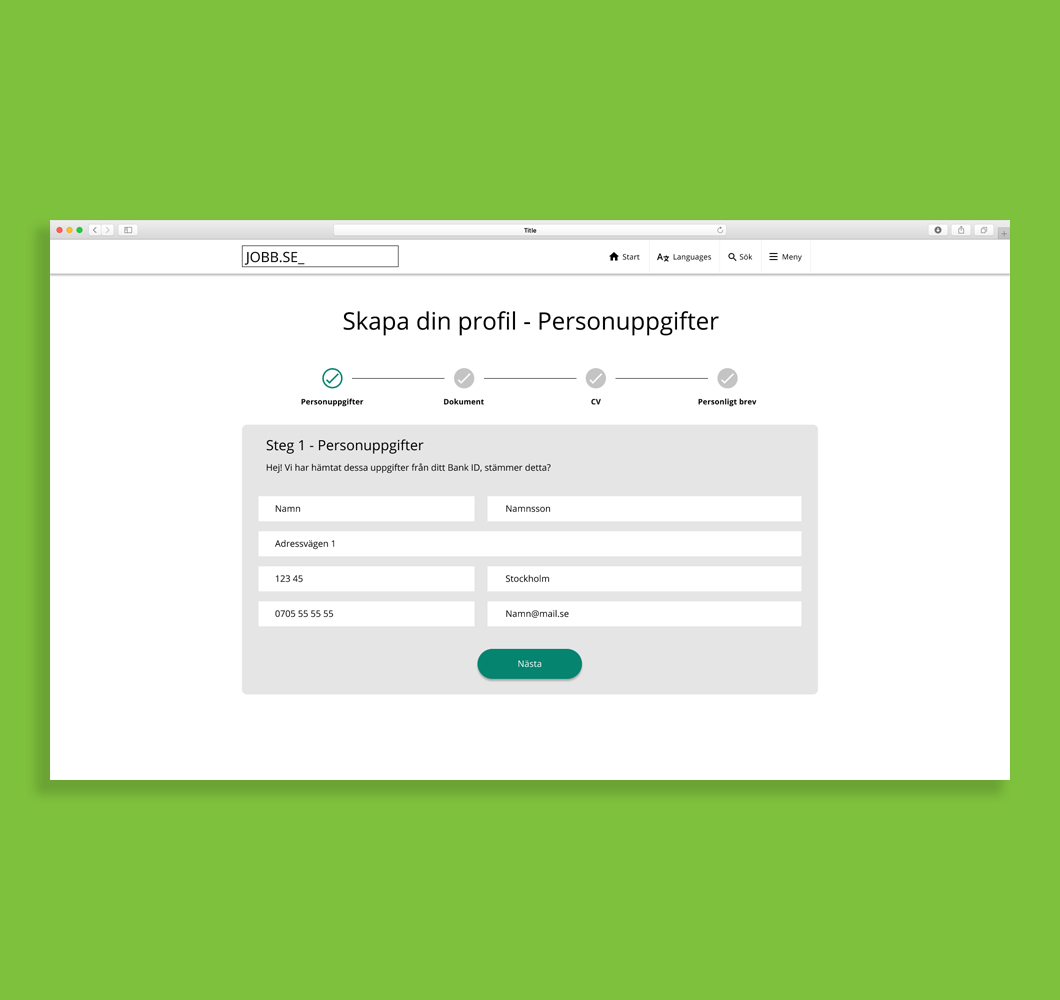
Step 1 - Personal details
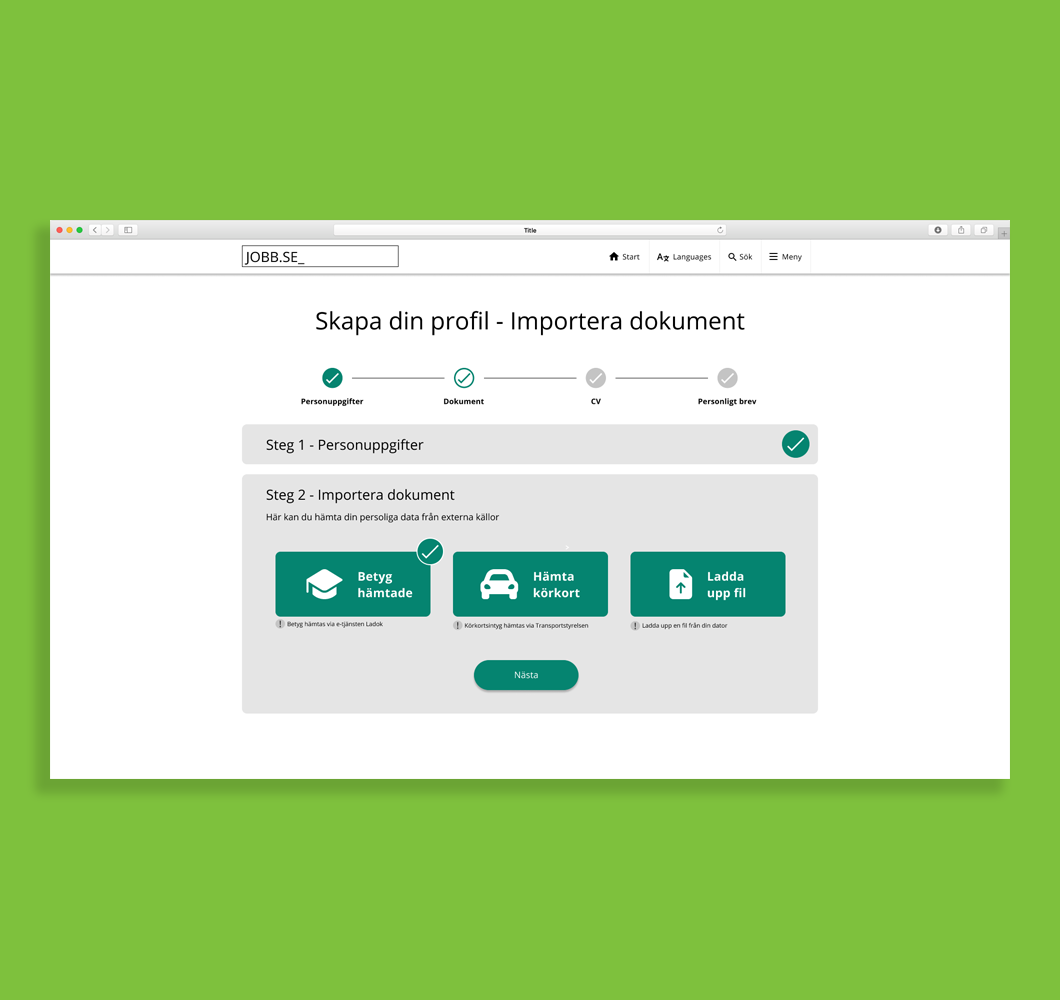
Step 2 - Import files
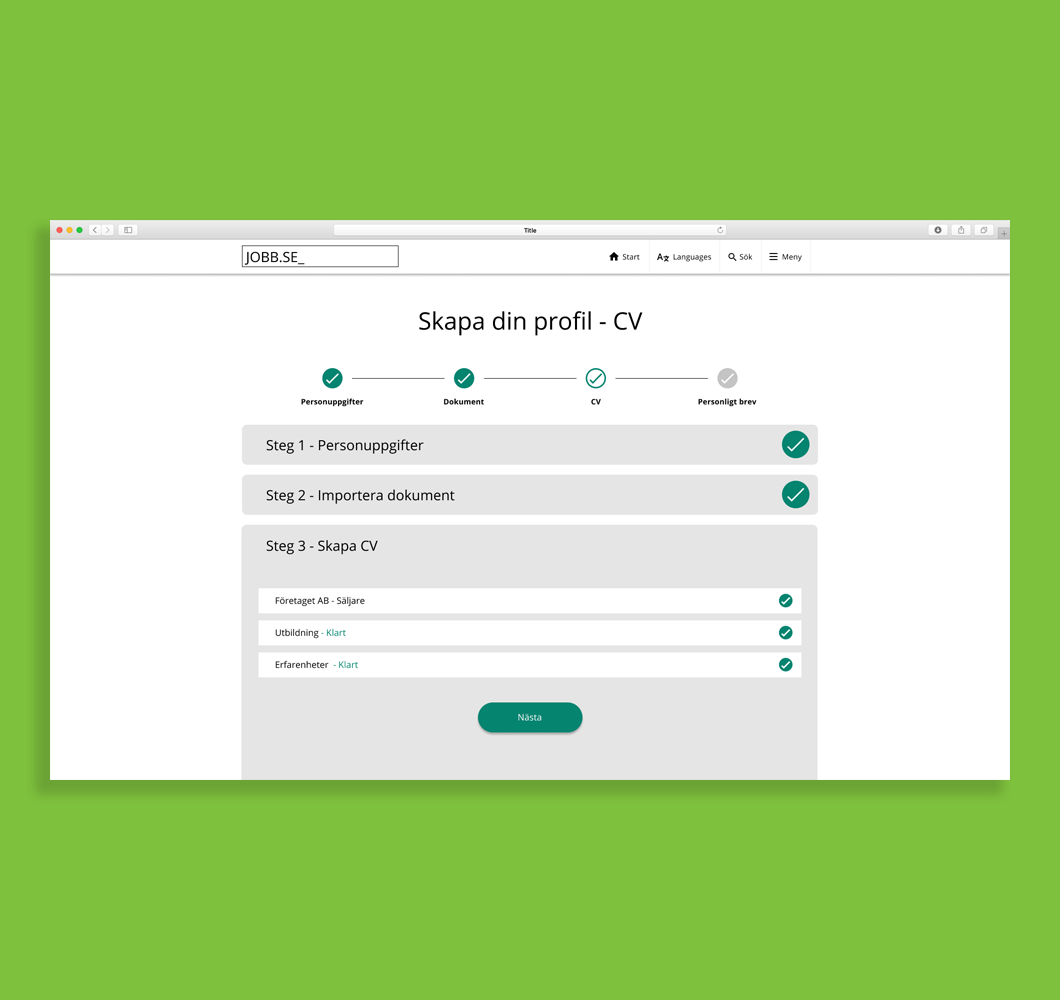
Step 3 - Experience
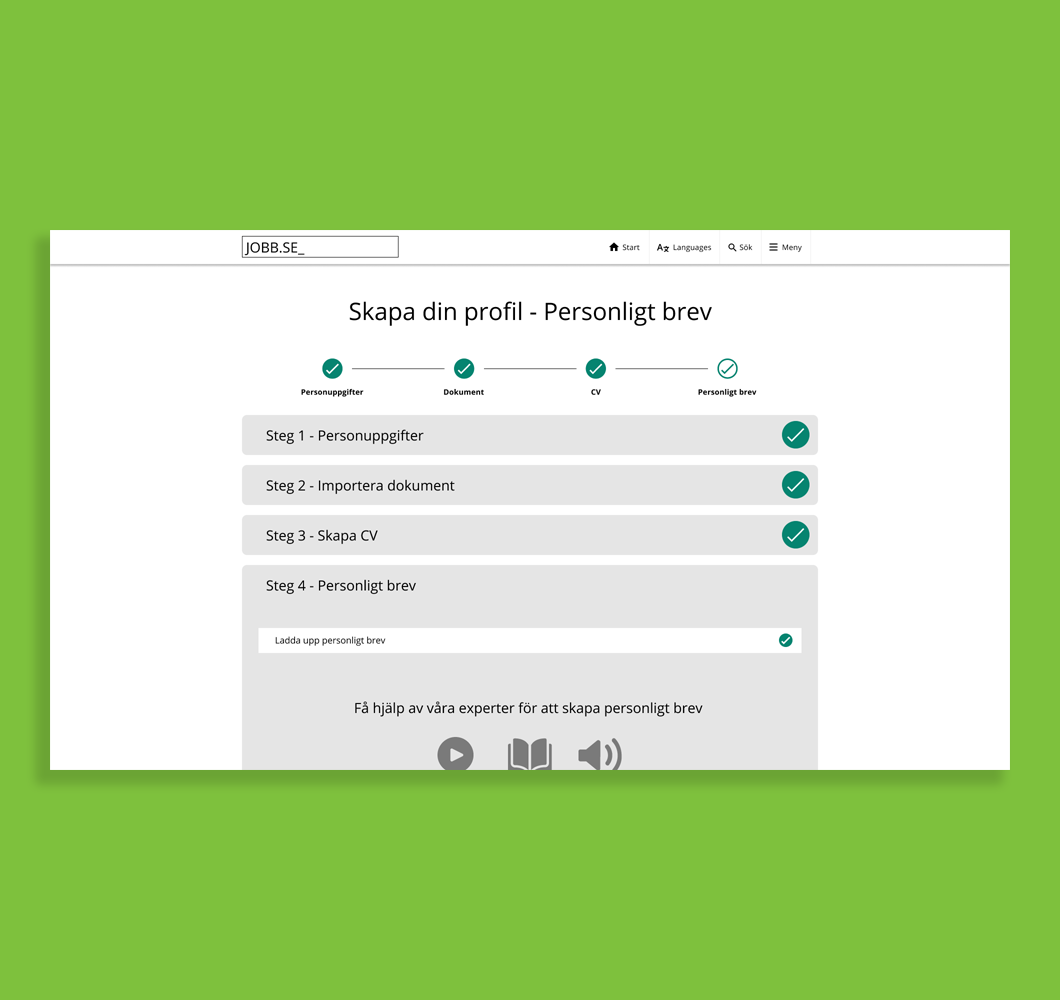
Step 4 - About me
Onboarding
Through our research, we had found that users found it difficult to know what information, and what files they are supposed to attach when creating a CV or personal letter.
Of course, it varies greatly by which industry someone is applying to, but with easy onboarding steps, helping the user add work experience, education, and files - you can at least guarantee they have something to go on when they're done creating their AF profile.
Profile - General
When you have completed the onboarding steps you are treated by your new profile.
Here you can access everything essential for your job hunting, such as a built-in CV and personal letter editor, upcoming events, and your calendar.
Insights
People really liked that pretty much everything they needed to apply for a job was gathered in one place.
When revealed that this service was made for Arbetsförmedlingen, some previously very negative towards AF, told us they might change their mind about them if they were provided a feature set like this.
Profile - My data
Further down on the profile page you'll find the My data section.
Every time you apply for a job through AF and share some of your personal data with an employer, this section lists which companies you've shared it with, and what kind of data you've shared.
Insights
Some test users explained that they might reconsider the value of their personal data when it's laid out in this way. Some even told us they might take bigger risks sharing more data to act more competitive with the knowledge of how easily it can be withdrawn.
Take control over your data
This section allows you to take control of your personal data by:
• Getting a quick overview of which data you've shared through the automatic data categories, or view the specific files shared.
• Completely remove access to your data, or give the employer the latest version of your documents.
• By automatically withdrawing data after 3 months, companies can also ask for extended access, which can be approved or denied.
Insights
One of our supervisors for the project who has certified knowledge of GDPR praised our implementation as very professional and in line with what is expected by GDPR law. This was awesome! :)
Final thoughts
Key takeaways
I'm overall satisfied with the result and insights we were able to gather in the limited time we had, but I also got the feeling that the people we interviewed and performed user tests with sometimes were overly positive to our efforts.
Usually, positive feedback is really appreciated, but these results felt a bit off, having users mentions often mismatch with what we found observing how they actually interacted with the prototype, etc.
The feeling that users were overly biased from previous bad experiences, and just approving of anything new was on my mind quite a bit - I would have liked to have been able to validate these feelings of mine more.
I would also have liked to iterate further on the concept, especially the onboarding section. Testing the concept without hiding AF's identity and ties to the project would have been really interesting as well, seeing if users' opinions would be affected or not.
• Balancing the wants and needs of users and clients is difficult
• Briefs can be really confusing, having you trust your gut a lot
• Pre-defined opinions from users about a company can be a big hindrance
Experience our solution
The following prototype was made for educational purposes, pages are in Swedish, and only partially interactable.
June 2021
